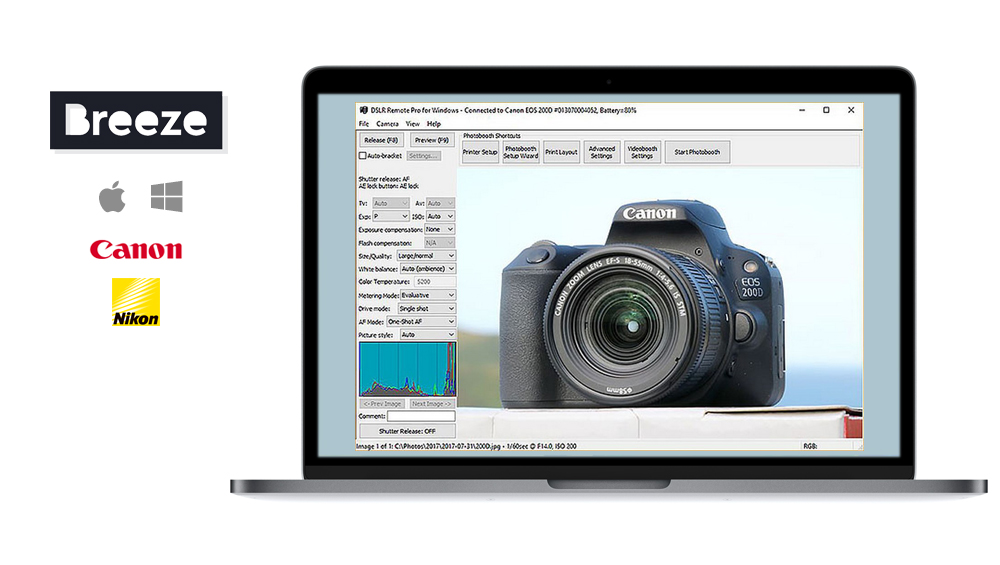D200 Tethering Software For Canon
I recently started taking macro photography shots with the NIKKOR 105mm lens on my Nikon D200 camera. I added a teleconverter to the system to get some ultra macro closeups. Unfortunately, I quickly found out that a fraction of a millimeter error in the focus will ruin the shot.

I wanted to find a way to control the camera and see the preview on my computer screen. The small LCD display didn't give me the detail that I wanted. Well, I will blame the uncalibrated screen and not my aging eyes! I found a great tethering app for my Apple Mac computer that allowed me to make adjustments to the camera and preview pictures on my computer's 21' screen instead of the 2' LCD display. This has completely changed my photography techniques and is a fantastic tool in the photo arsenal! The interface to Sofortbild is self explanatory. Tempat Perkumpulan Para Tante Banyak Uang Bandung 2018 No Hp.
Free Nikon DSLR Tethering Software for PCs, Tablets and Smartphones. After tethering their camera up to their computer via USB cable, take advantage of full access to almost all camera. Canon Imagerunner 1330 Windows 7 Driver. I found Darkroom Professional from Express Digital is the best tethering software with d200. It also integrates with photoshop do the retouching in photoshop and back to darkroom pro in an instant.
The options available are exactly like the options available on the camera. Please review the videos on this page to see the software in use. Here are some tips: • Manual Mode on the Camera - I usually shoot in Aperture Priority, but for Sofortbild, I like to shoot in manual mode. The big difference is that I can control both the shutter speed and the aperture independently. Because I can see the previewed pictures immediately on the computer screen, I can spend more time dialing in the settings exactly how I want them.
• Adjust the ISO - I think most folks set the ISO and forget it. That may make sense when you are out taking untethered pictures, but when you have the time and ability to adjust the settings without time concerns, then change the ISO on subsequent shots and see how the images change. Depending on the subject and the lighting conditions, the sensor sensitivity adjustments may make a huge difference. • Autofocus - Sometimes, the autofocus on the camera can become a bit wonky. I have set up shots where everything looked exactly as I wanted it, only to review the shot later to find out that the metering focused focused on the wrong part of the picture. Instead, consider changing the setting to Manual Focus. If you are set in a studio setting, or you have the time to make minor adjustments, then changing to Manual Focus will give you more control and ensures that the right part of the subject was in focus.
It is very easy to make corrections and retake the shot. • White Balance - This setting is routinely overlooked, but can make a huge difference in the quality of the shot. I typically adjust the White Balance when I am taking pictures while scuba diving. The color white looks different at 50 feet under water than it does at the surface and the camera must be calibrated accordingly. That same principle applies when taking pictures in your home. An incandescent lighting source looks different than fluorescent or natural light.
To compensate, the White Balance setting on the camera (and controlled via the software) will significantly change the appearance of the colors in your shot. If I am shooting in natural light, I find that setting it to 4000 Kelvin gives very good results. Taking pictures from your home office might be ideal for some people, but many photographers prefer to be out in nature, at a zoo, or in an arboretum. Fortunately, this software runs great on Mac laptops. Coupled with a couple of accessories, you will be able to use tethered shooting anywhere you can bring your tripod. The web site provides a great selection of the typical accessories needed for tethering including an accessory arm and computer platform. The accessory arm connects to the tripod.